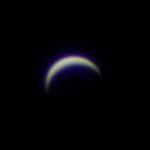
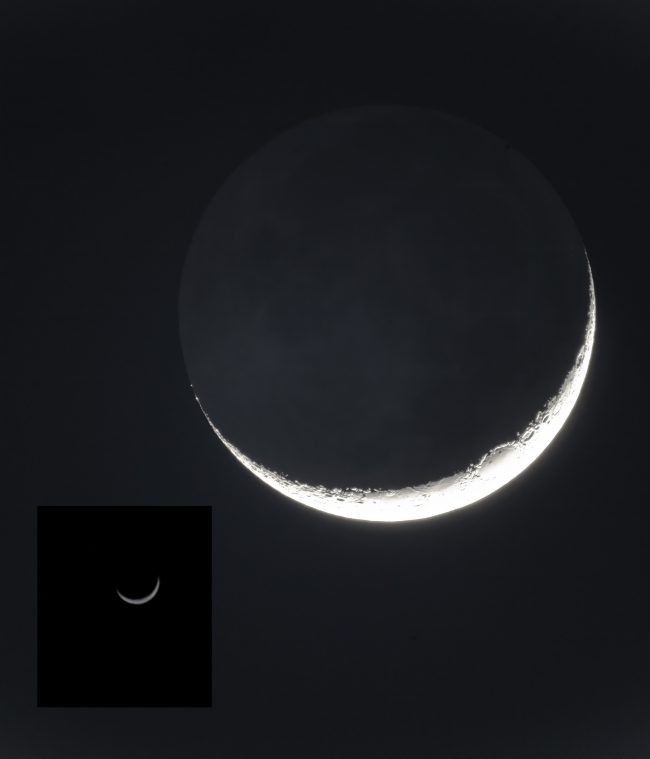
View at EarthSky Community Photos. | Some people are surprised to learn that Venus sometimes appears as a crescent, from our earthly vantage point. But, indeed, it does. Eliot Herman in Tucson, Arizona, captured an image of Venus (left, inset) on May 13, 2020, and contrasted it, in this montage, with a photo of a crescent moon (right). Thank you, Eliot!
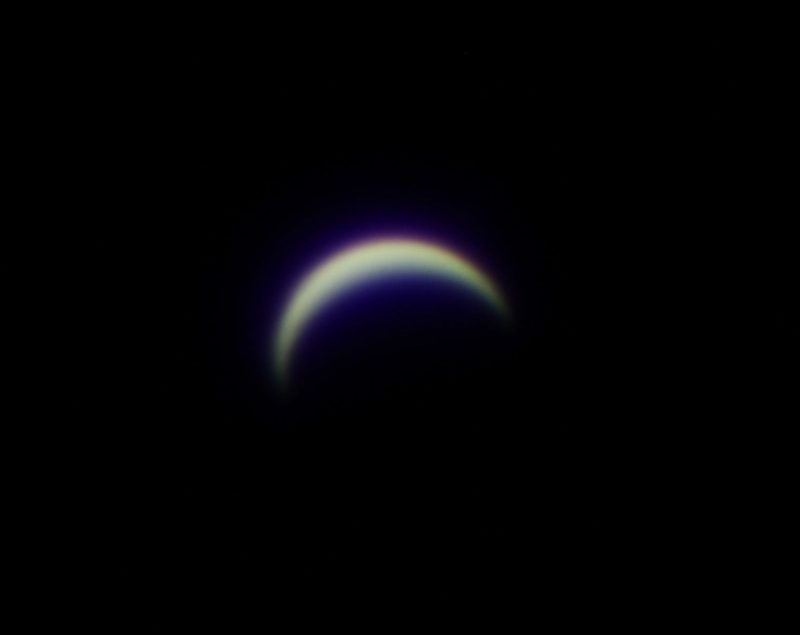
View at EarthSky Community Photos. | Victor C. Rogus of Sedona, Arizona, caught Venus as a waning crescent on May 11, 2020. He wrote: “It is becoming thinner!” Indeed, it is. And Venus will continue to wane in phase for the rest of this month, as it drops closer and closer to the sunset each evening. It will finally go between us and the sun on June 3, afterwards re-emerging into the morning sky. Thank you, Victor!
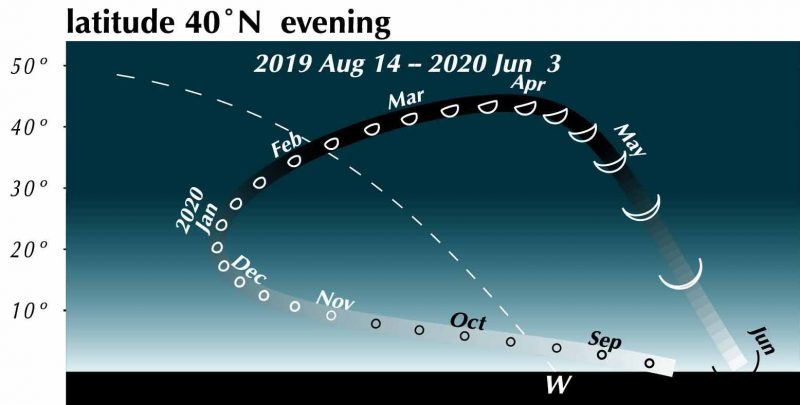
You can see Venus now in the west after sunset each evening. To the eye alone, it looks like an extremely bright point of light. Steadily held binoculars might show it as something other than round. This chart by Guy Ottewell (via his blog) depicts Venus’ disk size and phase – best seen through a telescope – in the evening sky from the planet’s superior conjunction (August 14, 2019, when it was on the far side of the sun from us) to inferior conjunction (June 3, 2020, when it’ll pass between us and the sun).
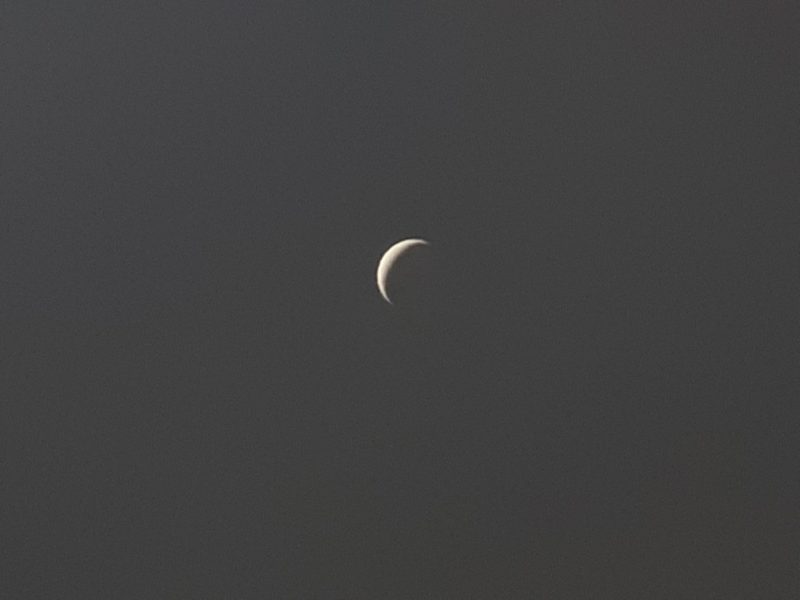
View at EarthSky Community Photos. | Aurelian Neacsu in Visina, Dambovita County, Romania, caught Venus as a 15.9% illuminated crescent on May 10, 2020. Thank you, Aurelian.
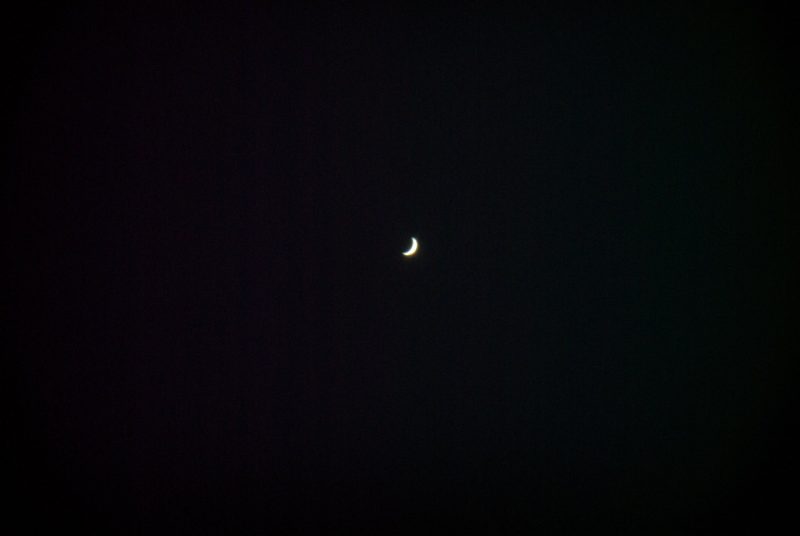
View larger at EarthSky Community Photos. | Dion Rust – Subsonic0 (@trent900uk on Twitter) – posted this beautiful crescent Venus photo to EarthSky’s Twitter feed. Dion wrote: “Managed a quick snap of it last week. It’s a lovely crescent at the moment so if anyone can have a look it’s worth it.” It was taken May 7, 2020, from East Hertfordshire, U.K. Thanks, Dion!
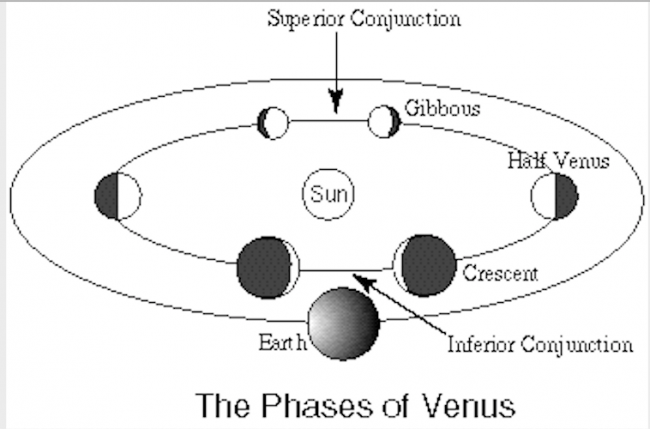
Why does Venus look like a crescent now? Just before and after superior conjunction last August – when Venus swept behind the sun from Earth – we saw a nearly full Venus. Inferior conjunction – when Venus will sweep between us and the sun – will happen next on June 3, 2020. Just before and after, we see a crescent Venus. Image via UCLA.
Bottom line: Photos of Venus in a waning crescent phase from the EarthSky Community, plus a diagram showing the phases of Venus during its evening apparition of late 2019 and early 2020, and, also, a diagram illustrating why Venus changes in phase.
from EarthSky https://ift.tt/366GEkF


View at EarthSky Community Photos. | Some people are surprised to learn that Venus sometimes appears as a crescent, from our earthly vantage point. But, indeed, it does. Eliot Herman in Tucson, Arizona, captured an image of Venus (left, inset) on May 13, 2020, and contrasted it, in this montage, with a photo of a crescent moon (right). Thank you, Eliot!

View at EarthSky Community Photos. | Victor C. Rogus of Sedona, Arizona, caught Venus as a waning crescent on May 11, 2020. He wrote: “It is becoming thinner!” Indeed, it is. And Venus will continue to wane in phase for the rest of this month, as it drops closer and closer to the sunset each evening. It will finally go between us and the sun on June 3, afterwards re-emerging into the morning sky. Thank you, Victor!

You can see Venus now in the west after sunset each evening. To the eye alone, it looks like an extremely bright point of light. Steadily held binoculars might show it as something other than round. This chart by Guy Ottewell (via his blog) depicts Venus’ disk size and phase – best seen through a telescope – in the evening sky from the planet’s superior conjunction (August 14, 2019, when it was on the far side of the sun from us) to inferior conjunction (June 3, 2020, when it’ll pass between us and the sun).

View at EarthSky Community Photos. | Aurelian Neacsu in Visina, Dambovita County, Romania, caught Venus as a 15.9% illuminated crescent on May 10, 2020. Thank you, Aurelian.

View larger at EarthSky Community Photos. | Dion Rust – Subsonic0 (@trent900uk on Twitter) – posted this beautiful crescent Venus photo to EarthSky’s Twitter feed. Dion wrote: “Managed a quick snap of it last week. It’s a lovely crescent at the moment so if anyone can have a look it’s worth it.” It was taken May 7, 2020, from East Hertfordshire, U.K. Thanks, Dion!

Why does Venus look like a crescent now? Just before and after superior conjunction last August – when Venus swept behind the sun from Earth – we saw a nearly full Venus. Inferior conjunction – when Venus will sweep between us and the sun – will happen next on June 3, 2020. Just before and after, we see a crescent Venus. Image via UCLA.
Bottom line: Photos of Venus in a waning crescent phase from the EarthSky Community, plus a diagram showing the phases of Venus during its evening apparition of late 2019 and early 2020, and, also, a diagram illustrating why Venus changes in phase.
from EarthSky https://ift.tt/366GEkF

Aucun commentaire:
Enregistrer un commentaire